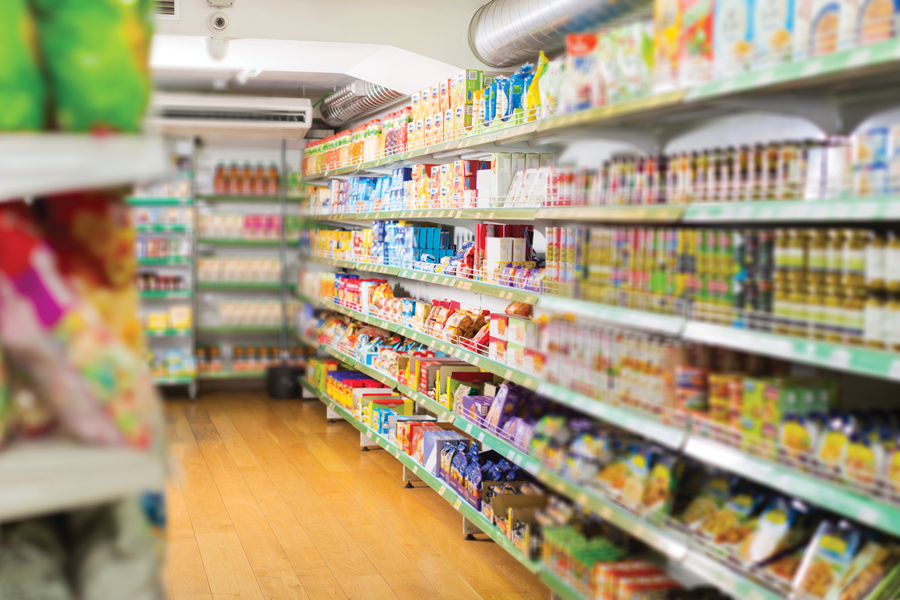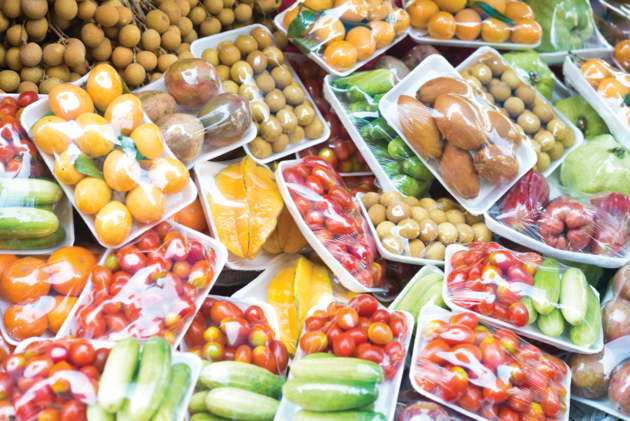
Beyond good intentions
By Mark Juhasz
Packaging Sustainability Editor pickActionable innovations in sustainable food packaging

Amid the ongoing legacy of the pandemic, plastic packaging for food saw a rise of 4.3 per cent in 2021 compared to 2020 due to an increase in on-the-go restaurant sales. The use of virgin plastic also increased by 2.5 per cent between 2020 and 2021. Amongst leading OECD economies globally, only about nine per cent of plastics are recycled. The rest end up largely in landfills and water systems or are incinerated. Some plastics such as film wrappers are particularly hard to recycle too. While the Canadian ban on certain single-use plastics does not come into full effect until 2025, a recent 2022 Ipsos survey found over 75 per cent agree businesses need to stop producing single-use plastic and support international bans as soon as possible.
Domestically, Environmental Defense has brought attention to the gap that exists in reliable information and targets toward waste reduction, and determining what is collected, sorted, and recycled. In Canada, the approximately 7,000 food manufacturing facilities work with a diversity of packaging companies, often resulting in misalignments between current recycling infrastructure, and novel materials like bioplastics.
Sustainability
The ADM 2023 Global Consumer Report identifies ‘earth friendly production’ as a trend. The report found consumers, and, in turn, retailers, have heightening concerns about food packaging. They’re looking for solutions to not only minimize waste, but also to restore and rebuild the environment. From a food CPG perspective, sustainable packaging can be fully realized under the growing pressure of ESG reporting and by applying new technologies and automation that aim at creating a circular economy. The fall 2022 International Pack Expo reinforced the themes of sustainability, and systematically moving beyond talk and toward action. In the U.S., the Securities and Exchange Commission is increasingly holding companies to account for their sustainability goals, even as the E.U. Commission Packaging and Packaging Waste Directive faces pushback from packaging industry on the cost implications of implementing proposed changes. To realize uptake of greater circularity, companies are conducting assessments of their packaging, supply chains, and related finances. These assessments include how to improve efficiencies, finding process and energy savings, and reducing waste while assessing net unit costs in operations.
ReFed, a group studying food and packaging waste, suggests 500,000 lb of food in the U.S. could be diverted from landfills annually with high-tech packaging. New automation applications could reduce packaging waste with more consistent, durable, and reusable packaging containers linked to automation logistics software, and supply chain transparency.

Innovations in materials science are increasing the shelf life of fresh produce while addressing the industry need for sustainable packaging. Photo © rufar/ Adobe Stock
Dealing with plastic
While packaging can be made from durable materials such as aluminum and glass that do not quickly degrade from use or cleaning, plastic packaging is the most ubiquitous format for food containers. Plastic also has the potential for significant circularity provided regulations improve. Circularity will require well designed policies that foster innovation, create incentives to adopt new technologies, and a clear roadmap for private investment to implement actions needed. For example, plastic pouch packaging could replace some rigid materials for foods and beverages. Chemical recycling could transform plastic waste into reusable raw materials and replace the need for fossil-based raw materials. This will need expert stakeholders from food science, chemistry, and materials science, along with regulatory comprehension of food safety. Energy capture and demand analysis will also be required, but chemical recycling can reduce pressure on virgin plastic feedstock, especially related to the tremendous demand for polyethylene and polypropylene. Recently, the Chemical Industry Association of Canada (CIAC) launched the Save Plastic campaign to promote a circular economic approach to include recovery and minimize raw materials and energy use. By 2030, the Canadian industry aspires to recycle or recover 100 per cent of plastic packaging.
Brand initiatives
All this leads to asking what businesses are doing to address the opportunity of circularity in food packaging? Answers vary by brand, but major emphasis is focused on material impact, such as seeking to eliminate over-wrapping, replacing multi-material packs with mono-materials. Leading packaging companies such as Amcor and Berry Global are on board with leaders such as the Ellen MacArthur Foundation and meeting the New Plastics Economy Global Commitment.
New innovations and applications are particularly impressive with start-ups and entrepreneurs globally. Sweden-based Innoscentia supports the food industry with technology that helps determine the safety of meat depending on the buildup of microbes in their packages, while SavrPak, a plant-based FDA-approved packet that can fit inside takeout containers, absorbs condensation and helps food stay hotter and crispier for longer periods of time. Innovators such as Paboco’s paper bottles, Danimer Scientific’s PHA bioplastic resin, or Sonoco’s moulded sugarcane are all part of an industrial transition to new material science applications in paper, bioplastic, and fibre packaging. Japanese flavour company Ajinomoto announced in 2022 their intention to introduce a paper package for their seasoning. The package can be ‘planted, grown, harvested, and replanted.’ Test runs will happen initially in the Philippines. U.S.-based Better Earth is focused on strengthening industrial circularity around their sustainable packing solutions. Major companies, such as Dow and France-based Valoregen, are working on partnerships to scale their chemical recycling logistics.
In Canada, sustainability and circularity in packaging design is evident in the Inwit app, which allows customers to order food using reusable containers that can be returned to the restaurant. Mississauga-based Erthos is a materials science company working to establish better industry guidelines and regulation of certified, compostable plastics. Nfinite Nanotech in Kitchener, Ont., makes an aluminum oxide nanocoating for environmentally friendly packaging that creates a better moisture and oxygen barrier to keep food fresh longer. Genecis Bioindustries, Toronto, is seeking to co-ordinate use of use eco-friendly plastics with CPG brands.
The frontier in sustainability in food packaging will likely fall somewhere between the feasibility associated with the costs of new processes and materials, regulation, consumer convenience, and the supporting infrastructure.
Mark Juhasz is CEO and founder of Harvest Insights. He has more than 20 years of experience in the agri-food industry. He can be reached at www.harvestinsights.com.
This article was originally published in the February/March 2023 issue of Food in Canada.
Print this page